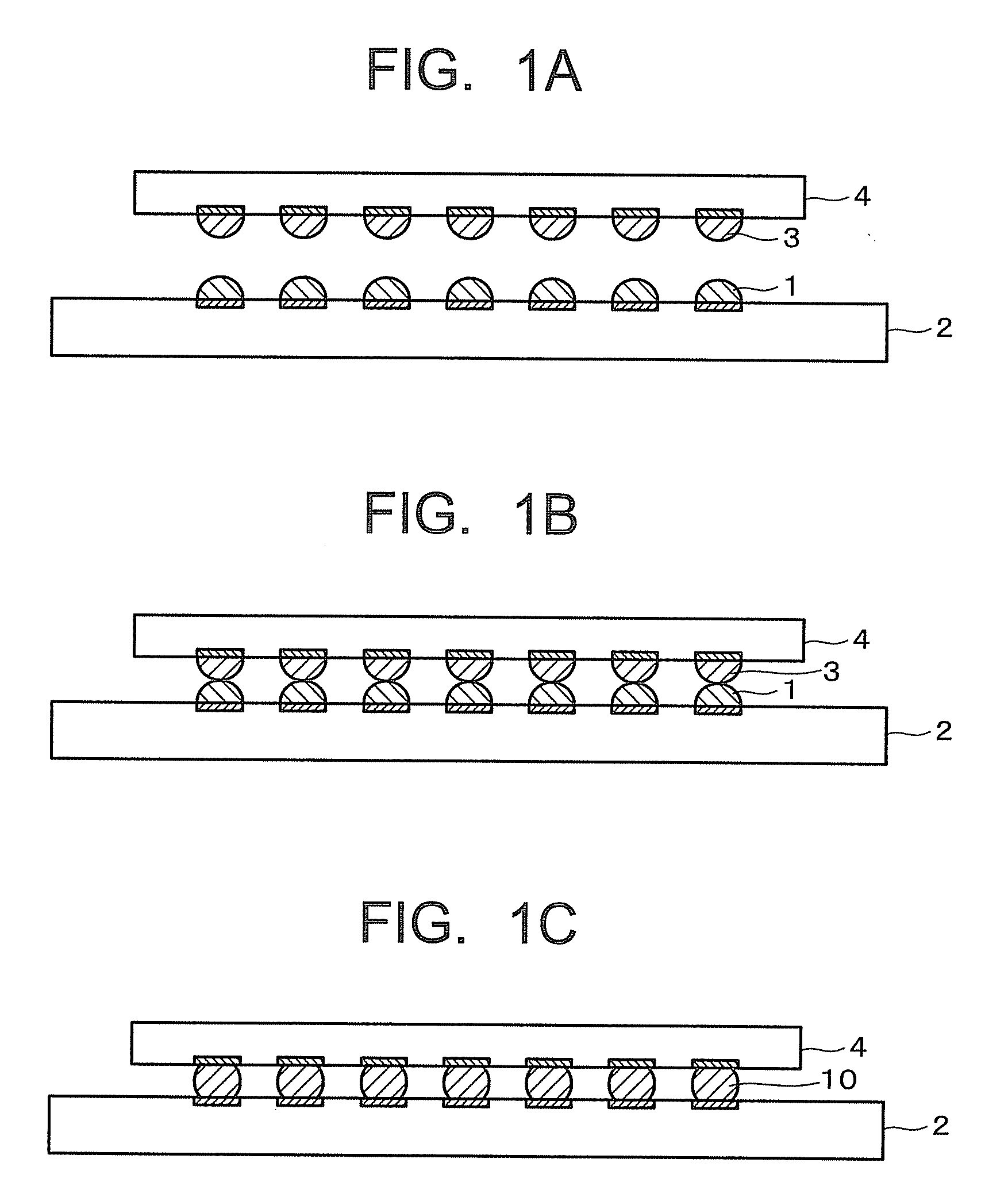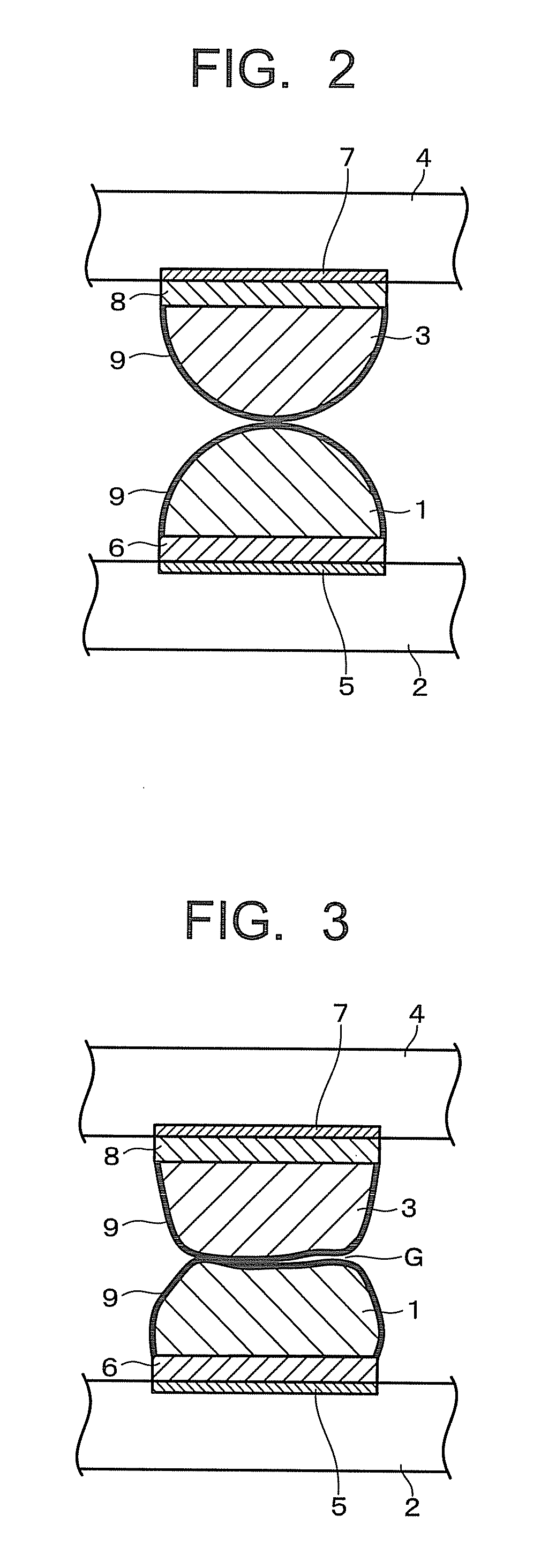Method for manufacturing semiconductor device
a manufacturing method and semiconductor technology, applied in the direction of manufacturing tools, printed circuit manufacturing, soldering apparatus, etc., can solve the problems of void suppression inside the solder, difficult to clean the fluxing agent completely, and difficult to achieve both the improvement of connectivity between the solder bumps and the suppression of voids
- Summary
- Abstract
- Description
- Claims
- Application Information
AI Technical Summary
Problems solved by technology
Method used
Image
Examples
first embodiment
[0017]FIG. 1A to FIG. 10 are cross-sectional views showing a process of manufacturing a semiconductor device according to a first embodiment. As shown in FIG. 1A, a first substrate 2 having first solder bumps 1 and a second substrate 4 having second solder bumps 3 are prepared. The first and second substrates 2, 4 are, for example, semiconductor chips (silicon (Si) chips or the like) or silicon (Si) interposers. A combination of the first and second substrates 2, 4, which is, for example, a combination of a first semiconductor chip (2) and a second semiconductor chip (4), a combination of a Si interposer (2) and a semiconductor chip (4), a combination of a semiconductor chip (2) and a Si interposer (4), or the like, is not limited in particular.
[0018]The first and second solder bumps 1, 3 are arranged in a matrix form in prescribed regions of the substrates 2, 4 respectively. The solder bumps 1, 3 as shown in FIG. 2 respectively, are formed on electrode pads 5, 7 provided on the sur...
second embodiment
[0038]In a process of manufacturing a semiconductor device in a second embodiment, similarly to the first embodiment (see FIG. 1A to FIG. 1C, FIG. 2, and FIG. 3), a second substrate 4 is stacked on a first substrate 2 while aligning first solder bumps 1 and second solder bumps 3. The first solder bumps 1 and the second solder bumps 3 are temporarily tacked. A concrete example of the substrates 2, 4, a constituent material for the solder bumps 1, 3, a method of temporarily tacking the solder bumps 1, 3, and so on are similar to those in the first embodiment.
[0039]Next, similarly to the first embodiment, a stack of the first substrate 2 and the second substrate 4, in which the solder bumps 1, 3 are temporarily tacked to each other, is disposed inside a heating furnace (reflow chamber), and then the heating furnace is evacuated to be in a reduced pressure atmosphere. Oxygen remaining inside the heating furnace oxides the solder bumps 1, 3, so that it is preferable that gas in the heati...
PUM
| Property | Measurement | Unit |
|---|---|---|
| pressure | aaaaa | aaaaa |
| pressure | aaaaa | aaaaa |
| temperature | aaaaa | aaaaa |
Abstract
Description
Claims
Application Information
 Login to View More
Login to View More - R&D
- Intellectual Property
- Life Sciences
- Materials
- Tech Scout
- Unparalleled Data Quality
- Higher Quality Content
- 60% Fewer Hallucinations
Browse by: Latest US Patents, China's latest patents, Technical Efficacy Thesaurus, Application Domain, Technology Topic, Popular Technical Reports.
© 2025 PatSnap. All rights reserved.Legal|Privacy policy|Modern Slavery Act Transparency Statement|Sitemap|About US| Contact US: help@patsnap.com



